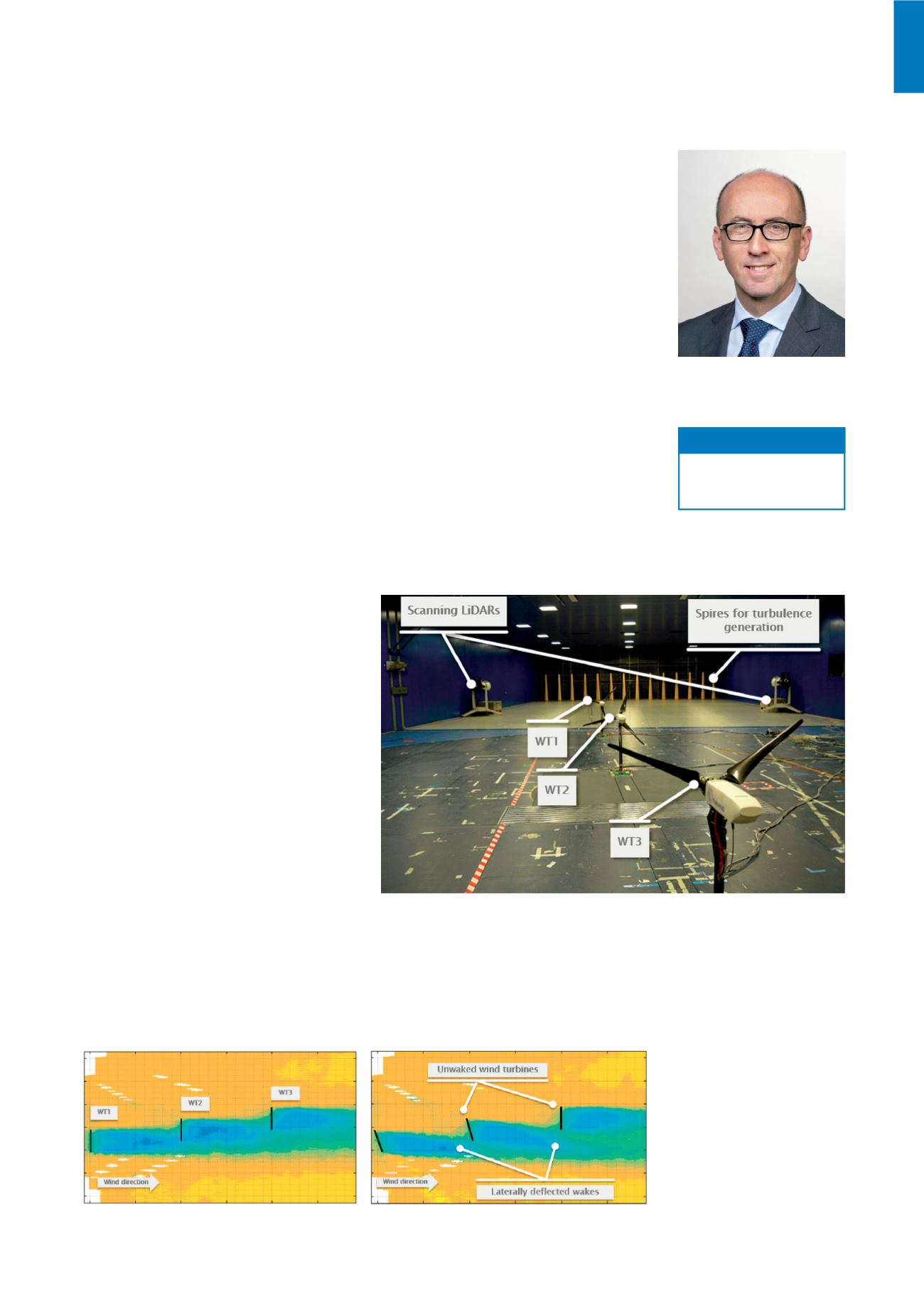

Wind Energy
93
Wind Energy
Wind energy technology
Prof. Dr.
Carlo L. Bottasso
n
The Wind Energy Institute (WEI) concentrates its research activities on
four highly interconnected thrust areas: simulation, testing, control and
design. The institute works both on basic scientific and application-orien-
ted problems, often in close collaboration with industry. Areas of specific
expertise embrace all main relevant scientific disciplines, including aero-
dynamics, structures, dynamics, materials, controls and electrical aspects.
www.wind.mw.tum.de carlo.bottasso@tum.dePhone +49.89.289.16681
Contact
The international conference ‘The Science
of Making Torque from Wind’ (TORQUE
2016) was organized by WEI at the
Garching TUM Campus on October 5-7,
2016, under the auspices of the European
Academy of Wind Energy (EAWE). More
than 530 researchers from 29 different
countries discussed the latest advance-
ments in wind energy science. The con-
ference, which grew by more than 60%
with respect to the 2014 event, saw the
presentation of over 140 oral papers and
almost 170 posters, which have all been
published in the open-access Journal of
Physics – Conference Series. A special
issue of selected papers is currently under
preparation for publication in Wind Energy
Science, the new EAWE flagship journal,
of which Prof. Bottasso is one of the
founding Chief Editors.
Scaled Wind Turbine and Wind Farm Testing
WEI has developed a scaled experi-
mental facility for the simulation of wind
turbines and wind farms in a boundary
layer wind tunnel. This unique facility
enables the conduction of experiments in
aeroservoelasticity, the study of wakes,
machine-to-machine interactions, and
wind farm control for power maximization
and load mitigation. The facility is highly
instrumented, allowing for the collection
of a wide range of high quality data,
both regarding the flow conditions and
the response of the machines. Such
data can be used for the verification of
performance of control strategies, as well
as the validation of computational tools.
The experimental setup is highly flexible,
supporting different machine configura-
tions and operational scenarios, as well as
the testing of different control algorithms
used on board the individual wind turbines
or the whole wind farm.
In early 2016, WEI conducted the first-ever
experimental demonstration of close-loop
wake-redirection control. In this wind
tunnel test, a cluster of three wind turbines
was operated in a coordinated manner,
leading to an improvement in their overall
Scaled wind farm in a boundary
layer wind tunnel
LiDAR visualization of the flow
without (left) and with (right) wind
farm control


















